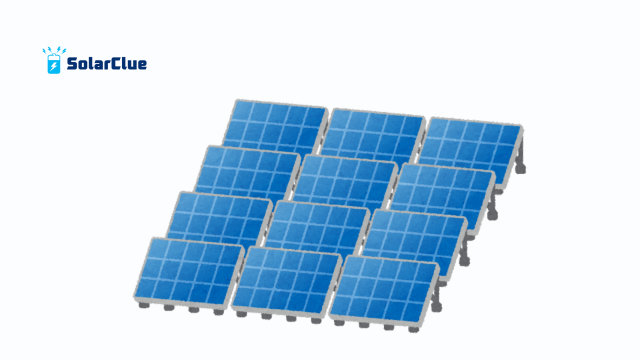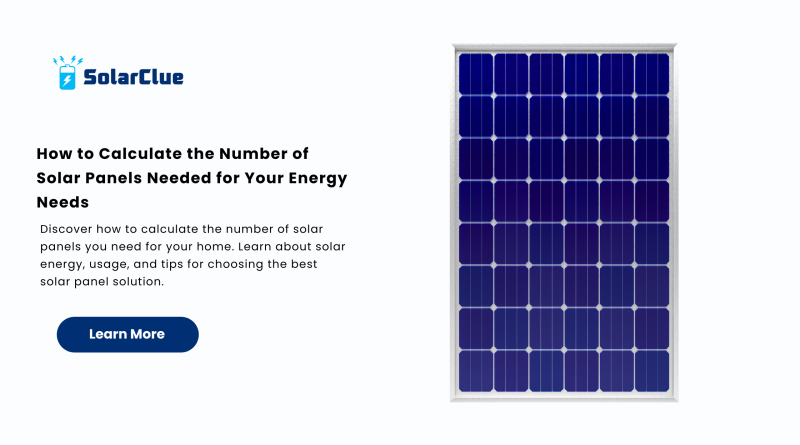How to Calculate the Number of Solar Panels Needed for Your Energy Needs
Understanding how many solar panels you need is essential when planning to harness solar energy for your home. This guide will walk you through the calculations and factors involved in choosing the right solar power system to meet your energy requirements efficiently.
Table of Contents
- 1 Why Solar Panel Sizing Matters
- 2 Step-by-Step: How to Calculate Solar Panel Requirements
- 3 Other Factors That Influence Solar Panel Count
- 4 Future-Proofing Your Solar Investment
- 5 Choosing the Best Solar Panel
- 6 Using Online Calculators
- 7 Professional Solar Assessment
- 8 Net Metering and Government Support
- 9 Environmental Impact of Going Solar
- 10 Benefits of Accurate Solar Sizing
- 11 FAQs
Why Solar Panel Sizing Matters
When investing in a solar panel for home, knowing the correct system size ensures you generate enough solar power without overspending. An undersized system won’t cover your needs, while an oversized system means wasted money. A right-sized system ensures maximum savings on your electricity bill and enhances the efficiency of your solar power system.
Step-by-Step: How to Calculate Solar Panel Requirements
1. Determine Your Energy Consumption
Your energy consumption is usually indicated on your electricity bill in kilowatt-hours (kWh). Calculate your daily, monthly, and yearly usage. For example, if your monthly usage is 600 kWh, your annual usage will be: 600 kWh x 12 months = 7,200 kWh annually.
2. Identify Peak Sunlight Hours in Your Area
Your region’s daily sun exposure significantly affects your solar panel output. Southern states in India often enjoy 5 to 6 peak sun hours daily, while northern regions might receive around 4 to 5.
3. Calculate Total System Size Needed
Use the formula: System Size (kW) = Annual Consumption (kWh) / (365 x Sunlight Hours) Using our example: 7,200 / (365 x 5) = 3.95 kW system needed
4. Choose Panel Wattage
Choose from common solar panel wattages: 300W, 350W, 400W, or 450W. The best solar panel will balance cost, efficiency, and roof compatibility.
5. Divide System Size by Panel Wattage
To find out the number of solar panels: Number of Panels = System Size (Watts) / Panel Wattage Example: 3950W / 400W = ~10 panels
Other Factors That Influence Solar Panel Count

Roof Space
Available roof space limits how many panels can be installed. Measure usable space, excluding shaded or obstructed areas.
Panel Efficiency
High-efficiency solar panels like monocrystalline types produce more power per square meter than polycrystalline panels, making them ideal for limited roof areas.
Panel Orientation & Tilt
Panels facing south with a tilt angle of 15-30 degrees offer optimal performance in India. Incorrect orientation may reduce your output by 10–20%.
System Losses
Expect energy losses of 10–15% due to shading, wiring resistance, dirt, and inverter inefficiency. It’s smart to slightly oversize your system to compensate.
Future-Proofing Your Solar Investment
When planning, consider upcoming energy needs—such as adding air conditioners, EV charging, or expanding your home. Design a scalable system with expansion in mind.
Choosing the Best Solar Panel
Invest in quality solar panels with strong warranties (typically 25 years), high conversion efficiency, and proven brand reputation. Leading Indian brands include:
- Vikram Solar
- Tata Power Solar
- Loom Solar
- Waaree Energies
Using Online Calculators
You can simplify the math using online tools. Platforms like SolarClue offer accurate estimators based on your location and energy usage.
Professional Solar Assessment
Consulting a solar installer or provider ensures your solar power system is tailored to your roof, usage, and future needs. Professionals also help with permits, government subsidies, and installation.
Net Metering and Government Support
In India, net metering allows you to send excess energy back to the grid, reducing your bill further. Many states also offer incentives and subsidies to lower upfront costs.
Environmental Impact of Going Solar
Installing solar panels not only saves you money but also reduces your carbon footprint. A 4 kW system can offset over 4 tons of CO₂ annually.
Benefits of Accurate Solar Sizing
- Maximizes savings on power bills
- Reduces carbon emissions
- Improves efficiency
- Avoids system overload or underperformance
- Increases property value
FAQs
Q1. How do I know my roof is suitable for solar panels?
Check roof orientation, shading levels, structure stability, and available space.
Q2. What if I plan to increase energy usage in the future? I
nstall a scalable system and inform your provider to prepare for future expansions.
Q3. Can I use solar energy during power outages?
Yes, if you install a hybrid or off-grid system with a battery backup.
Q4. How long do solar panels last?
Most solar panels last 25–30 years, with over 80% efficiency even after two decades.
Q5. Do I need permission for installing solar panels?
Yes. Most DISCOMs require applications for net metering and installation approvals.
Q6. Is solar viable in cloudy or rainy weather?
Yes. Panels still generate power under diffused sunlight, although at reduced efficiency.
Q7. How much money can I save with solar?
Savings vary by location, consumption, and grid rates. Most users save 50–90% on monthly electricity bills.
Q8. What maintenance is required?
Clean the panels every few weeks and schedule a professional inspection once a year.
Eager to turn sunlight into savings? Visit blog.solarclue.com for expert tips or explore your options now at solarclue.com—your trusted partner in sustainable energy!


